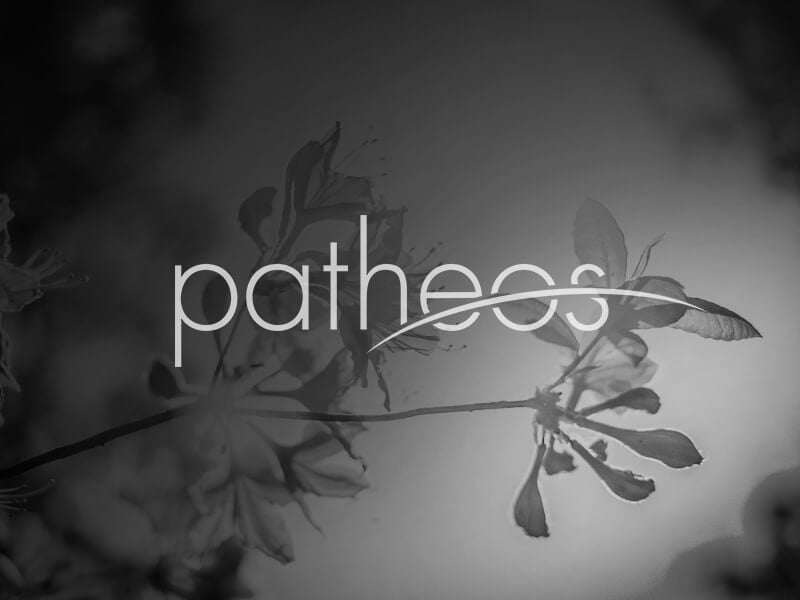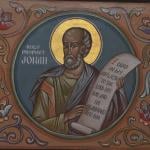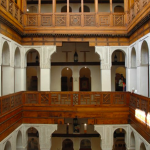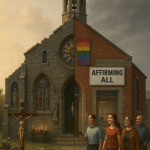Rome, Italy, May 6, 2017 / 04:02 pm (CNA).- The Vatican's point-man on family and life issues says rather than just complaining about problems we see in society, we need to focus on the Church's rich, beautiful take on marriage and the family. “We criticize the times we live in, we criticize governments about laws...this is an opportunity to do something positive for the family, not just to sit back and say 'they're all wrong,'” Cardinal Kevin Farrell told CNA May 3. “This is a moment for us to convey our message, what we believe about the family and what we believe about human love and what we believe about human life,” he said. “Let’s not just always focus on the negative, and focus on what’s wrong…let’s do something to educate.” Prefect of the Vatican's new mega-dicastery for Laity, Family and Life, Cardinal Farrell was one of three Americans to get a red hat from Pope Francis during his Nov. 19 consistory. He was previously the bishop of Dallas before being tapped by Francis to lead the new department. The cardinal is in charge of preparing for three major events that will take place in 2018 and 2019: the World Meeting of Families, which will take place Aug. 22-26, 2018, in Dublin, Ireland; the Synod on youth in October 2018 and the Jan. 22-27, 2019, international World Youth Day encounter in Panama. Pope Francis' Amoris Laetitia will form the basis for the catechesis sessions during the World Meeting of Families, “but we will accentuate the positive,” he said. Controversy has surrounded footnote 351 of Chapter 8 of Amoris – which addresses the reception of the sacraments for divorced and remarried couples – and Farrell said that people within the Church can and should discuss it. “We criticize, we object – which we rightfully should – I don't say we shouldn't do that, but I do say that we need to do a little more,” he said. “We need to not just criticize, but we need to say what our teaching is, and that's not a yes and no answer.” For him, Amoris Laetitia is about the beauty of marriage and family life – it's also “Chapters 2,3,4,5...” “So that's what I hope and that's what I hope we would do, not just on the question of marriage, but … the question of human life, many questions today,” he said. In addition to Amoris Laetitia and the need to showcase the beauty of the Church’s teaching on marriage and family, Cardinal Farrell also spoke about the ongoing restructuring of his dicastery, which merged several other departments together, and preparations for World Youth Day, the Synod and the World Meeting of Families.Please read below for excerpts of CNA's interview with Cardinal Farrell:You've been here a little over six months now. How has it been? It’s been a rather intense six months, it’s been a period of great learning for me because I’ve never worked in the Vatican before, so there’s a lot of things you have to learn. And I never knew too much about the dicastery or the pontifical council for the laity, for the family and for human life. I really never had any involvement whatsoever, although I was ordained a priest by Cardinal Eduardo Pironio, who at one time was the prefect of the Pontifical Council for the Laity. But it has been six months of rather listening to people and trying to understand exactly what it is that we do here, and what laity does and what family does and what human life does as a dicastery, as a department of the Holy See. So it has been a learning curve for me to understand what’s happening, and naturally the new statute of this new dicastery which brings all three departments together, is a little different than what was actually done in the past. And it’s also a question of bringing more lay people in to work here. Everybody has commented that this is the first time that Vatican law stipulates in the constitution of the dicastery, that the undersecretaries must be laypeople, and the secretary of the dicastery can in fact be a layperson. So we’re in the process of trying to identify people and inviting them to consider working here, which obviously is the first step. I hope that we will have a secretary and undersecretaries by September or October. Obviously I had to know what we were doing before we could start doing anything, and it has been quite an interesting time. At the same time this dicastery is responsible for World Youth Day, it’s responsible also for the gathering of the family, which took place two years ago in Philadelphia and next year will take place in Dublin, Ireland, and of course in between we have the synod on young people. So I would say we have enough to do.Is there a particular strategy you guys have for merging everything into one? I imagine it’s got to be a pretty intense task… Yes, it is a pretty intense task, but I would say we will do this gradually and we have already integrated many of the services, many of the different departments…many aspects of the merger have already taken place. It is now a question of establishing it according to the new statute, which will begin to take shape, my guess is September sometime until the following June. I would hope that it would be completed by June of next year. That would be my plan. I don’t know what God’s plan is, but that would be mine. But of course, all of this is so new to me. I was the bishop of Dallas, Texas, and nobody was more surprised about this than I was, but you just keep going.As you mentioned, you are going into a lot of things. You have the World Youth Day, you have the World Meeting of Families, and then in between you have the synod. All of these things are sort-of connected, so is there a certain type of synergy in terms of how you are planning for these events? Of course. I think that everybody in this dicastery will cooperate on all three events. Some people ask me many times, why did Pope Francis decide to merge these three? Well, there is an internal logic to laity. If you think for one moment, the majority of lay people in the Catholic Church do not pertain to lay ecclesial movements, but are just ordinary Catholics who go to Church on Sundays or practice their faith. And laity live out the Christian life, normally, not everybody, but the vast majority, in marriage and the family, which brings about human life, which brings about young people, which brings about World Youth Day. So there’s an internal logic for why these three separate departments come together, and there’s a certain synergy that should exist between all events that I just mentioned. So obviously we all work in making a great effort to make these moments of evangelization. They are not just gatherings, they have a purpose, they have a reason for being, and we hope to make them even better in the future.Pope Francis during the vigil for youth before Palm Sunday said we need to listen to youth and their contributions. What would you say is the contribution of youth, what is their mission in the Church and in society today? Obviously Pope Francis, when he was speaking about that at Saint Mary Major, we had just had a whole week-long meeting of young people and representatives of conferences of bishops, and the vast majority here were young people, to address the question of World Youth Day in Panama, obviously, and the question of the synod. The Holy Father is very interested in hearing what young people have to say. It’s not a synod of bishops about bishops. If that were the case, we wouldn’t have to listen to anybody else, whereas this synod, there will be wide consultation and Pope Francis is determined that the voice of young people be heard. That is why Cardinal Baldisseri and officials from the synod office attended our week-long event and had hours on hours of interaction with, these are all the leaders from all over the world, there were from all over the world, there were 360 people from all over the world. The majority of the young people who were there to talk about the Church and young people, and that’s what they did, and they gathered a vast amount of information. On top of that, Pope Francis wants this survey to be widely distributed, not to the bishops of the United States or any other country in the world, but to the young people. We already know what the bishops are going to say, we already know what priests are going to say, we want to know young people are going to say. The synod is about young people. That’s why Pope Francis was so animated that night at Saint Mary Major, and that’s he insisted that they have to stand up and be heard, and they had to speak up and shouldn’t just think ‘it’ll be the same as always.’ They need to be involved. Just recently, I think on Sunday, he said that young people need to get off the couch, it’s bad for the cholesterol. They need to do something; be active, get involved…we want to make this consultation as wide as possible. It’s on the internet, anybody can subscribe, anybody can answer the questions or give comments and say what they think.How will these contributions from the youth be incorporated into the synod, but also in World Youth Day? They will also be included when the synod takes place before World Youth Day. Obviously somebody is going to have to analyze these hundreds of thousands of comments which we hope we will receive. Conferences of bishops will have to put them in order, but they’re not going to be interpreting them, they’re going to just be sending them to the office of the synod here in the Vatican. They have a vast staff that they will coelute and put them into the working document of the synod. The working document will then be prepared based on what young people have said, just like what we did for the synod on the family, which was a great change. In the past, every bishop had 10 minutes to say something and that was it. Now, the working document is to be built by the young people. Obviously that will be the central theme of the synod, it will also be the theme of World Youth Day and, to a certain extent, the World Meeting of Families will be the next event that takes place. It takes place in August of 2018, and October 2018 is the synod and January of 2019 is the World Youth Day. So we’ll have many sleepless nights between now and then.I'm sure you will. Has the Vatican started to receive any of the answers to the questionnaires yet? We haven’t, but I’m sure the office of the synod has. They listened to 350 young people at our gathering – the title of it was “From Krakow to Panama,” which we hold every year, which is the transfer of the cross to the young people of Panama and Central America. It’s not just Panama, but all the bishops of Central America, which is very important. It’s in January this year, not in the summertime, and we hope that many people will attend, that we have made it in such a way that they can attend Thursday, Friday, Saturday and Sunday. They don’t have to stay the whole week if they can’t do that if they’re coming from the northern hemisphere, which should be in school, and the southern hemisphere is in summer vacation. So yes, they have gathered quite a lot of information. I’m sure they continue to gather it, and have been for the last couple of weeks, and eventually it will all be put together.Given the scope of responsibilities for your dicastery, will you be contributing in a special way to the synod? We already have and will continue to. Yes, one of the staff here is a permanent member, Father Joao. He’s from Brazil. He is a permanent staff member of the synod, and he is a representative. Of course we all have input, and this dicastery has had and will continue to have a lot of input on the synod. That’s our particular expertise, so yes we will have a large amount to say on the question of young people in the Church.Turning to the World Meeting of Families, as an Irishman you’ll get to go back to your roots… It’s been so long ago since I’ve lived in Ireland that I’ve even forgotten about my roots. Not really, but yes, it’s interesting that the first event that I will have to chair, so to say, will be in Dublin, Ireland. Who would have ever thought that when I left Ireland back in 1966, or ’65, did I ever think that one day I would return? Absolutely not. But that’s what’s happening. So I will be returning for the World Meeting of Families, which takes place in August of next year, 2018.As an Irishman, a Pope hasn’t visited for almost 40 years, so how significant will the visit of Pope Francis be to the country, particularly given some of the challenges they’ve faced in recent years? The way I always look at this is, I think that we have to go back to what the basic principles of our doctrine really are. The Pope is the Vicar of Christ on earth. That’s what we believe, that’s what we say when we speak in the credum. I believe it, and I think that when he visits any country, just like when he went to Egypt, he brings a sense of peace and a sense of hope to wherever he is. I believe this will be a great gift for the Church not just of Ireland, but I would say of all of northern Europe. He will go there to gather with families, but he will also bring his presence and he will bring, as the Vicar of Christ on earth, he will bring the thought of the Holy Spirit, the thought of God Almighty, there to the people, and that’s why people…why is he so popular? Because he really, truly lives the Gospel of Jesus Christ. I do think this will be a great moment for the Church in Ireland, I think it will be a great moment for families and Catholic families all over the world, and not just Catholic families but all families. Because the family is going through a rough time these days. Whether you’re a Catholic or a non-Catholic, the state of family is having a difficult time, and I this will bring a new impulse. We spend an awful lot of time criticizing culture. We criticize the times we live in, we criticize governments about laws and things like this. This is an opportunity to do something positive for the family, not just to sit back and say ‘they’re all wrong.’ This is a moment for us to convey our message, what we believe about the family and what we believe about human love and what we believe about human life. Let’s not just always focus on the negative, and focus on what’s wrong, and what’s wrong with our societies and what’s wrong with our governments. Let’s do something to educate. I fear many times that we become so involved in protesting and fighting against laws and ideologies that we forget that we haven’t educated our younger generations about the basic, fundamental beliefs about our faith. And that’s what we need to do and that’s why this gathering on the family is so important. It’s an opportunity for us to showcase what we believe about marriage and the family. We know all the problems that exist, we know all the criticisms from one side or from the other side. We know them all. This is not a time for us to fight against the left or to fight against the right, this is a time when we need to say what we believe in. And how great, and how important the family is, and marriage is, to the future of our world and the future of our society. We’re not going to change the culture unless we change individuals one at a time. And we cannot sit back and criticize when things don’t go the way we want them to go, whether in the political world or the relationship to the family, of course, I don’t speak about anything else. When we criticize this law or that law, why did they permit that, or these other people permitted it. Stop. It’s time for us to tell people about the value of marriage, the value of human love, what it means and the value family. That’s our future. If we are just going to criticize, I fear that the Lord is going to repeat to us the parable in the Gospel or Martha and Mary. You’ve been worried about many things, but only one thing was important and you didn’t do it. So that’s why I believe this is so important for us. Stop all the criticism, and focus on the positive, focus on faith. It’s like what happens in Amoris Laetitia. Just recently I spoke to a priest from the United States. He’s a good friend, he’s a theologian who teaches theology in the United States…but I finally got him down to say he knew all about Chapter 8, but finally confessed to me that he had only glimpsed at Chapters 2,3,4,5 and 6. I rest my case.That was actually going to be my next question. There has been a lot of criticism, but this document will be the foundation of the catechesis… Absolutely. Chapters 1 through 7 are the catechesis that will be spoken about and will be preached in the world gathering of the family. We all know that there are all kinds of difficulties and problems, and human beings cannot be put into…we’re all different. Even though I came up in the same family with the same education when I was a young kid as my three other brothers, we’re all different and we all think different ways. So you can’t put the whole world into the same category and say ‘this is what you will all do.’ This gathering of the families will be based on Amoris Laetitia, but we will accentuate the positive. The greatest writings in modern history on the family and on human love are in this document. And it’s not different than any other document, it’s just expressed in a way that equates to the reality of the culture and the world we live in today. If you pick up the documents of the Council of Trent, a normal person would not really understand what they’re all talking about. Why? Because you don’t live in that culture and in that moment in history. This is what Amoris Laetitia does. It addresses the question of marriage, human love and family in our present culture and present historical moment. And the catechesis will all be about that, yes, that’s what it will be about.So would you say that the core of this document, the heart of this document, is about the beauty of marriage and the family? Yes, of course. That’s what it’s all about. It’s not about a canonical question in Chapter 8, footnote whatever-it-is. It’s about Chapters 2,3,4,5. Ask your colleagues in the news media, have they ever read anything besides Chapter 8? And if they’re honest, they will say no, we’ve never read it. We’ve read summaries, we’ve read bits and pieces, but we’ve never really read it…So that’s what I hope and that’s what I hope we would do not just on the question of marriage, but the question of marriage, the question of human life, many questions today. We criticize, we object – which we rightfully should – I don’t say we shouldn’t do that, but I do say that we need to do a little more. We need to not just criticize, but we need to say what our teaching is, and that’s not a yes and no answer. Read more
















